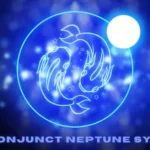Step into the mesmerizing world of Catrin, where dance becomes a powerful vessel for conveying emotions and stories. In this blog post, we will delve into the captivating history, cultural significance, techniques, and evolution of Catrin. Join us on a journey through time as we explore why this traditional dance continues to captivate audiences with its emotive storytelling.
What is the traditional dance of Catrin?
Catrin is a traditional Mexican dance that holds deep cultural roots and significance. Originating from the state of Guerrero, Catrin is a dance performed during Day of the Dead celebrations and other festive occasions. The dance typically involves a male dancer wearing an elaborate skeleton costume known as “Calavera.” This costume symbolizes the cycle of life and death, paying homage to ancestors and honoring Mexican traditions.
The movements in Catrin are graceful yet poignant, depicting themes of love, loss, and remembrance. Through intricate footwork and fluid arm movements, dancers convey emotions ranging from sorrow to joy with every step taken. The music accompanying Catrin adds another layer of depth to the performance, enhancing the emotional impact on viewers.
As dancers twirl gracefully across the stage, audiences are transported into a world where past meets present through movement and expression. Catrin serves as a powerful reminder of Mexico’s rich heritage and storytelling traditions that continue to resonate with people worldwide.
The history and cultural significance of Catrin
In the heart of Mexico’s vibrant cultural tapestry lies Catrin, a traditional dance that dates back centuries. Rooted in indigenous rituals and Spanish influences, Catrin embodies a rich history steeped in tradition and folklore.
This captivating dance holds deep cultural significance as it symbolizes the eternal cycle of life and death. Through graceful movements and intricate footwork, dancers pay homage to ancestors and celebrate the beauty of existence. The elaborate costumes worn during performances are a visual spectacle, reflecting the fusion of pre-Hispanic traditions with colonial artistry.
Catrin is more than just a dance; it is a profound expression of Mexican identity and resilience. Its preservation over generations speaks to the enduring spirit of a people determined to honor their heritage amidst changing times. As Catrin continues to enchant audiences worldwide, its legacy endures as a testament to Mexico’s rich cultural heritage.
The emotions portrayed through the dance
The dance of Catrin is a powerful expression of deep and complex emotions. As the dancers move gracefully across the stage, their movements convey feelings of love, loss, longing, and sorrow. Each step and gesture tells a story of separation and yearning that resonates with audiences on a profound level.
Through subtle movements of the hands, body language, and facial expressions, the dancers evoke a sense of melancholy and heartache that transcends words. The emotional intensity of Catrin lies in its ability to communicate raw human emotions without spoken dialogue or lyrics.
Watching Catrin can stir up feelings of empathy, nostalgia, and introspection in viewers as they witness the poignant narrative unfolding before them. It’s a mesmerizing experience that leaves a lasting impression on those who have witnessed the beauty and depth of this traditional dance form.
Catrin serves as a reminder that emotions are universal – they connect us all regardless of language or cultural differences. In its essence, Catrin is not just a dance; it’s an emotional journey that touches hearts and souls alike.
Techniques and movements used in Catrin
When it comes to the traditional dance of Catrin, every movement holds deep cultural significance. The techniques used in Catrin are a beautiful fusion of grace and strength, reflecting the emotions embedded within the performance. Dancers gracefully glide across the stage, their movements telling a story of love, loss, and longing.
The intricate footwork combined with fluid arm movements creates a mesmerizing visual display for spectators. Each step is deliberate and calculated, conveying raw emotion with every motion. The dancers’ expressions mirror the intensity of the narrative being portrayed through their graceful gestures.
Catrin requires precision and skill as performers seamlessly transition between moments of euphoria and despair. The combination of sharp turns, delicate spins, and passionate leaps captivates audiences worldwide. As dancers embody characters from folklore or history through their movements, they transport viewers to another time and place.
From sweeping gestures to subtle nuances in posture, each technique in Catrin serves a purpose in evoking powerful emotions from both dancers and observers alike.
How the dance has evolved over time
Catrin, a traditional dance rooted in Mexican culture, has evolved over time to reflect the changing dynamics of society and artistic expression. Initially performed as a solemn ritual honoring the Day of the Dead, Catrin has gradually transformed into a captivating display of emotions and storytelling.
As generations passed, dancers began infusing modern elements into the choreography while still paying homage to its sacred origins. The movements became more fluid and dynamic, incorporating intricate footwork and expressive gestures that convey deep-seated emotions like love, loss, and resilience.
With advancements in technology and access to global influences, Catrin has expanded its reach beyond Mexico’s borders. Dancers from diverse backgrounds have embraced this beautiful art form, adding their unique interpretations while preserving its cultural essence.
Today, Catrin continues to captivate audiences worldwide with its blend of tradition and innovation. Its evolution reflects not only the passage of time but also the enduring power of dance as a universal language that transcends boundaries.
The impact of Catrin on modern culture and entertainment
Catrin, the traditional Mexican dance of separation, has transcended centuries to make a lasting impact on modern culture and entertainment. Its emotional depth and captivating movements have inspired artists across various mediums, influencing contemporary dance performances, music videos, and even fashion shows.
In today’s world, Catrin continues to serve as a powerful symbol of passion and longing. Its rich history and cultural significance have been embraced by creators seeking to evoke raw emotions in their work. The intricate footwork and graceful gestures of Catrin have become a source of inspiration for choreographers looking to infuse their routines with authenticity and soul.
Through its evolution over time, Catrin has managed to retain its essence while adapting to new audiences. Its ability to convey complex emotions through movement alone resonates deeply with spectators worldwide. As a timeless art form that speaks volumes without words, Catrin remains an influential force in shaping modern artistic expressions.
Conclusion: Why Catrin remains a powerful and emotional dance to this day
Catrin, with its rich history and cultural significance, remains a powerful and emotional dance that continues to captivate audiences around the world. Through its intricate techniques and movements, Catrin portrays a range of emotions from love and longing to sorrow and separation. The evolution of this traditional dance over time has only added depth and meaning to its storytelling.
In modern culture and entertainment, Catrin still holds a special place as a symbol of Mexican heritage and artistry. Its influence can be seen in various forms of media, from movies to music videos, showcasing the enduring appeal of this beautiful dance.
As we watch the graceful movements of Catrin performers on stage or screen, we are reminded of the universal themes it explores – love, loss, resilience. It is through these timeless emotions that Catrin continues to resonate with audiences today, connecting us across time and cultures through the language of movement.
FAQs
What is the main theme of “Catrin’s”?
The main theme of “Catrin’s” is the complex relationship between a mother and daughter, highlighting love, conflict, and growth.
Who is the author of “Catrin’s”?
“Catrin’s” is written by Welsh poet Gillian Clarke, known for her evocative and poignant exploration of personal and social themes.
How does “Catrin’s” reflect emotional depth?
The poem uses vivid imagery and emotional language to convey the intensity of feelings experienced in the mother-daughter dynamic.
What literary techniques are used in “Catrin’s”?
Clarke employs imagery, metaphor, and enjambment to enhance the poem’s emotional resonance and thematic complexity.
Why is “Catrin‘s” significant in contemporary poetry?
“Catrin’s” is significant for its honest portrayal of familial relationships, making it relatable and impactful for readers across generations.







